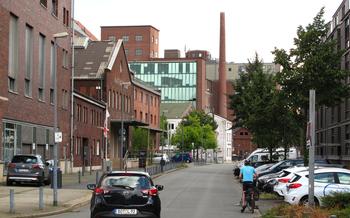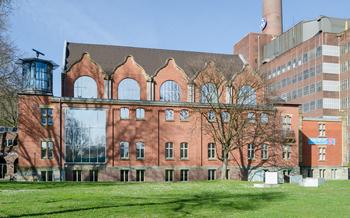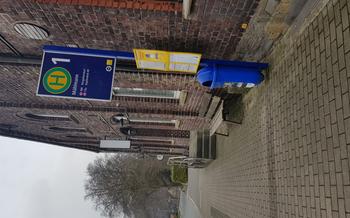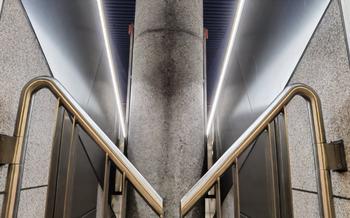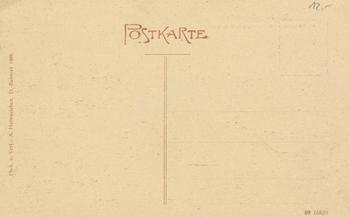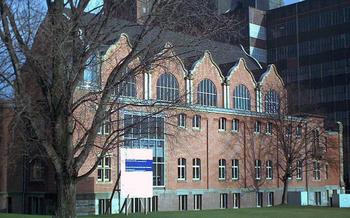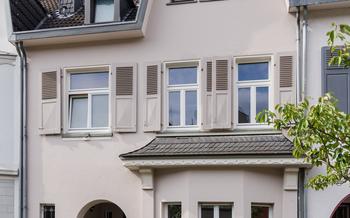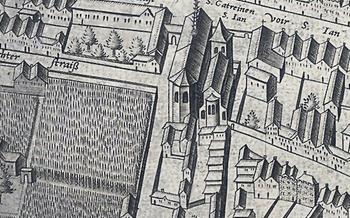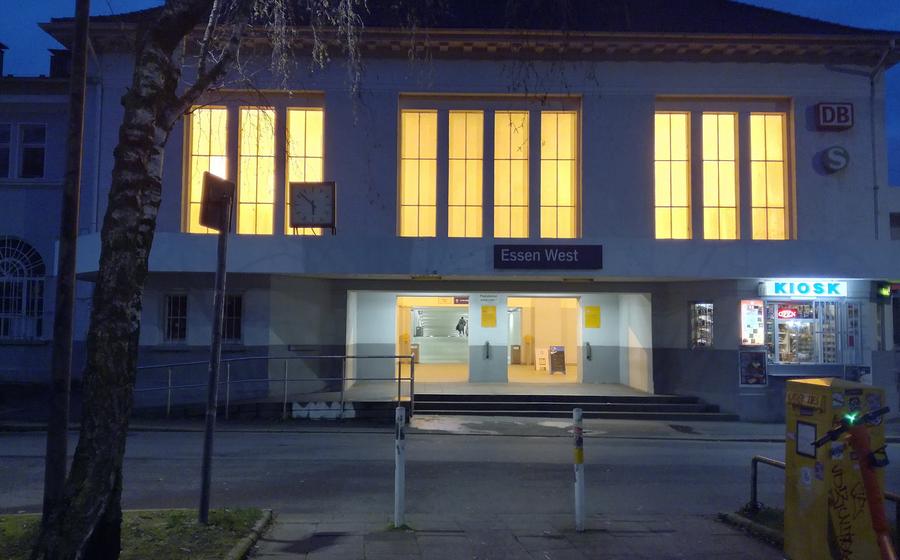
Museum der Deutschen Binnenschifffahrt
- History of the Museum der Deutschen Binnenschifffahrt
- Exhibits at the Museum
- Highlights of the Museum
- Guided Tours of the Museum
- Educational Programs at the Museum
- Accessibility of the Museum
- Hours of Operation of the Museum
- Admission Fees to the Museum
- How to Get to the Museum
- Nearby Attractions
- Restaurants and Cafes near the Museum
- Hotels near the Museum
- Shopping near the Museum
- Events and Festivals near the Museum
- Insider Tip
History of the Museum der Deutschen Binnenschifffahrt
The Museum der Deutschen Binnenschifffahrt, which translates to the Museum of German Inland Shipping, is a fascinating institution dedicated to preserving and showcasing the rich history of inland shipping in Germany. Situated in the heart of the Ruhr region, in the city of Duisburg, the museum has played a pivotal role in documenting and celebrating the significance of inland waterways and their contribution to the country's economic and cultural development.
The museum's journey began in 1912, when the Central Commission for Rhine Shipping recognized the need to establish a central repository for artifacts, documents, and knowledge related to inland shipping. This vision was realized in 1926, when the museum opened its doors to the public for the first time. Since then, the museum has undergone several expansions and renovations, most notably in 1998, when it was relocated to its current location in the historic Ruhrort district, a former inland port that once bustled with shipping activities.
Today, the Museum der Deutschen Binnenschifffahrt stands as a treasure trove of inland shipping history, housing an extensive collection of exhibits that span centuries of innovation and engineering. Visitors can delve into the stories of the people who shaped the industry, from humble boatmen to visionary engineers, and witness the evolution of inland shipping technology, from simple wooden barges to modern motorized vessels.
Exhibits at the Museum
The Museum der Deutschen Binnenschifffahrt offers a diverse range of exhibits that cater to visitors of all ages and interests. The permanent exhibits provide a comprehensive overview of the history and development of inland shipping in Germany. Visitors can explore interactive displays, models, and artifacts that showcase the evolution of shipbuilding techniques, the challenges faced by inland sailors, and the importance of inland waterways for trade and commerce.
The museum also hosts temporary exhibits that focus on specific aspects of inland shipping or related topics. These exhibits often feature special artifacts, photographs, or documents that offer visitors a unique glimpse into the world of inland shipping.
In addition to the permanent and temporary exhibits, the museum also presents special exhibits that are designed to engage and entertain visitors. These exhibits may include interactive games, multimedia presentations, or hands-on activities that allow visitors to learn about inland shipping in a fun and engaging way.
The museum's interactive exhibits are a particular highlight for children and families. These exhibits allow visitors to experience firsthand the challenges and rewards of inland shipping. Visitors can steer a virtual ship through a narrow canal, load and unload cargo, and even experience the thrill of a storm on the river.
Highlights of the Museum
The Museum der Deutschen Binnenschifffahrt boasts a diverse and captivating collection of exhibits that showcase the rich history and evolution of German inland shipping. Among the highlights of the museum's permanent display are intricately crafted model ships that provide a glimpse into the artistry and engineering prowess of past shipbuilders. These models, ranging from small replicas to detailed representations of historic vessels, offer visitors an up-close look at the design and construction techniques employed in various eras.
The museum also houses an impressive array of historical artifacts, including navigational instruments, logbooks, and personal belongings of sailors. These artifacts provide a tangible connection to the lives and experiences of those who worked and traveled on Germany's inland waterways. Through these objects, visitors can gain insights into the challenges and triumphs faced by mariners as they navigated the country's rivers and canals.
In addition to model ships and artifacts, the museum features a collection of paintings and photographs that capture the beauty and significance of German inland shipping. These artworks, created by talented artists and photographers, depict scenes of bustling ports, tranquil waterways, and the people who shaped the history of this important industry. They offer a visual narrative that complements the museum's other exhibits and provides visitors with a deeper appreciation for the cultural and artistic aspects of German inland shipping.
Multimedia presentations and interactive displays further enhance the visitor experience at the Museum der Deutschen Binnenschifffahrt. These interactive elements allow visitors to explore the museum's collection in a dynamic and engaging way. Through interactive touchscreens, audio guides, and hands-on exhibits, visitors can learn about the history of shipbuilding, the challenges of navigating inland waterways, and the impact of inland shipping on the development of Germany.
Guided Tours of the Museum
Guided tours of the Museum der Deutschen Binnenschifffahrt are available for individuals and groups, offering a deeper insight into the history and significance of the exhibits. Visitors can choose from a variety of themed tours, each led by an experienced guide who will provide commentary and answer questions.
Tours are available in German and English, and the cost is included in the museum admission fee. Tours typically last for about an hour and cover the highlights of the collection, including the model ships, historical artifacts, and interactive exhibits.
Reservations for guided tours are recommended, especially for groups, and can be made in advance through the museum's website or by calling the museum directly.
Educational Programs at the Museum
The Museum der Deutschen Binnenschifffahrt offers a wide range of educational programs for visitors of all ages. These programs are designed to provide visitors with a deeper understanding of the history and culture of inland shipping in Germany.
Workshops for Children
The museum offers a variety of workshops for children, which are designed to teach them about the history and technology of inland shipping in a fun and interactive way. These workshops cover a variety of topics, such as shipbuilding, navigation, and cargo handling.
Lectures for Adults
The museum also offers a series of lectures for adults, which are designed to provide them with a deeper understanding of the history and culture of inland shipping in Germany. These lectures cover a variety of topics, such as the history of the Rhine River, the development of inland shipping technology, and the role of inland shipping in the German economy.
School Programs
The museum offers a variety of school programs, which are designed to help teachers integrate the history and culture of inland shipping into their curriculum. These programs cover a variety of topics, such as the history of inland shipping in Germany, the different types of inland vessels, and the environmental impact of inland shipping.
Research Opportunities
The museum also offers a variety of research opportunities for scholars and students. These opportunities include access to the museum's collection of artifacts, documents, and photographs, as well as the opportunity to work with the museum's staff on research projects.
Accessibility of the Museum
The Museum der Deutschen Binnenschifffahrt is committed to providing a welcoming and accessible environment for all visitors. The museum is wheelchair accessible, with ramps and elevators throughout the building. Strollers are also welcome, and there is plenty of space to park them.
The museum offers a variety of educational programs for visitors of all ages. These programs are designed to be accessible to everyone, regardless of their ability or disability. The museum also has a number of interactive exhibits that are perfect for visitors who want to learn more about the history of inland shipping in Germany in a fun and engaging way.
Visitors who are deaf or hard of hearing can request a sign language interpreter or a hearing assistive device. The museum also offers a number of visual aids for visitors who are blind or visually impaired.
The Museum der Deutschen Binnenschifffahrt is a great place to learn about the history of inland shipping in Germany. The museum is accessible to everyone, and it offers a variety of educational programs and exhibits that are perfect for visitors of all ages.
- Wheelchair accessibility: The museum is wheelchair accessible, with ramps and elevators throughout the building.
- Stroller accessibility: Strollers are welcome, and there is plenty of space to park them.
- Elevator access: Elevators are available to all floors of the museum.
- Parking for visitors: There is a large parking lot for visitors, including accessible parking spaces.
Hours of Operation of the Museum
The Museum der Deutschen Binnenschifffahrt has regular operating hours throughout the week, with some variations during holidays and special events.
- Regular Hours
- Tuesday to Sunday: 10:00 AM to 5:00 PM
-
Closed: Mondays
-
Holiday Hours
- Christmas Eve (December 24): Closed
- Christmas Day (December 25): Closed
- New Year's Eve (December 31): Closed
-
New Year's Day (January 1): Closed
-
Seasonal Hours
- During the summer months (June to August), the museum extends its hours on Tuesdays, Wednesdays, and Thursdays, staying open until 7:00 PM.
Admission Fees to the Museum
Admission to the Museum der Deutschen Binnenschifffahrt is very reasonable, making it a great value for visitors of all ages. General admission tickets for adults cost 6 euros, while children and students can enter for just 3 euros. Seniors receive a discounted rate of 4 euros. Family passes, which admit two adults and two children, are available for 15 euros.
For groups of 10 or more, special rates are available. School groups can visit the museum for just 2 euros per student. Guided tours are also available for an additional fee, and can be arranged in advance by contacting the museum.
It's important to note that the museum offers free admission on the first Sunday of every month. This is a great opportunity to visit the museum without having to pay an entrance fee. However, it's important to keep in mind that the museum is likely to be more crowded on these days.
How to Get to the Museum
Public transportation options
The Museum der Deutschen Binnenschifffahrt is easily accessible by public transportation. The nearest tram stop is "Museum der Deutschen Binnenschifffahrt", which is served by tram line 10The nearest bus stop is "Museum der Deutschen Binnenschifffahrt", which is served by bus line 14
Driving directions
If you are driving to the museum, take the A40 motorway and exit at the "Essen-Zentrum" interchange. Follow the signs for the museum. The museum is located on the right-hand side of the street.
Parking options
There is a limited amount of street parking available near the museum. There is also a paid parking garage located next to the museum. The cost of parking is €5 per day.
Nearby Attractions
The Museum der Deutschen Binnenschifffahrt is located in a vibrant neighborhood that offers a variety of attractions for visitors. History buffs can explore the nearby Ruhr Museum, which houses a vast collection of artifacts and exhibits on the history and culture of the Ruhr region. Art enthusiasts can visit the Museum Folkwang, which showcases a diverse collection of modern and contemporary art. For those who enjoy shopping, there are several shopping malls and boutiques within walking distance of the museum.
Nature lovers can take a stroll through the Grugapark, a beautiful botanical garden that features a variety of plants and flowers from around the world. The park also includes a playground, a petting zoo, and a miniature railway. For a more active experience, visitors can rent a bike and explore the many bike paths that wind through the city.
The Museum der Deutschen Binnenschifffahrt is also conveniently located near a number of restaurants and cafes. Visitors can enjoy a variety of cuisines, from traditional German fare to international dishes. There are also several bars and nightclubs in the area for those who want to enjoy a night out.
Restaurants and Cafes near the Museum
In the vicinity of the Museum der Deutschen Binnenschifffahrt, visitors can find a diverse culinary scene featuring various restaurants and cafes catering to different tastes and budgets.
-
Restaurant Schifferbörse: Situated just a short walk from the museum, this renowned restaurant offers a delightful ambiance with stunning views of the Ruhr River. Guests can indulge in classic German cuisine, including hearty schnitzel and flavorful sausages, while savoring the picturesque waterfront vistas.
-
Café del Sol: For those seeking a more casual dining experience, Café del Sol is an excellent choice. This cozy cafe boasts a relaxed atmosphere, perfect for unwinding with a cup of aromatic coffee or enjoying a light lunch. Their menu offers a range of sandwiches, salads, and cakes, providing a refreshing break from museum exploration.
-
Zum Alten Markt: Steeped in history and tradition, Zum Alten Markt is a must-visit for those seeking authentic German cuisine. This charming restaurant serves up regional specialties, such as Himmel un Äd (blood sausage with mashed potatoes) and Rheinischer Sauerbraten (marinated beef stew), in a warm and welcoming setting.
When it comes to price range, visitors can expect to find options to suit all budgets. While some restaurants offer fine dining experiences with higher prices, there are also plenty of affordable options available, including cafes and budget-friendly eateries.
To enhance the dining experience, it is advisable to check online reviews and recommendations before selecting a restaurant. This can provide valuable insights into the quality of food, service, and ambiance, helping visitors make informed decisions based on their preferences.
Hotels near the Museum
The Museum der Deutschen Binnenschifffahrt is surrounded by a variety of hotels that cater to different budgets and preferences. Whether you seek a luxurious stay or a more affordable option, you'll find something to suit your needs within walking distance of the museum.
A few steps from the museum, the *Hotel Bredeney* offers elegant rooms and suites with classic décor, a spa with an indoor pool, and a fitness center. It's an excellent choice for those seeking a high-end experience.
For a more budget-friendly option, the Hotel am Ruhrufer is a 3-star hotel offering comfortable rooms with modern amenities. It's located a short walk from the museum and provides a convenient and affordable base for exploring the area.
If you prefer a unique and charming experience, the Hotel Im Park Essen is housed in a historic building and features individually decorated rooms with antique furnishings. It's situated in a peaceful park, offering a tranquil retreat just a short stroll from the museum.
No matter your budget or preferences, you're sure to find a hotel near the Museum der Deutschen Binnenschifffahrt that meets your needs and makes your visit to Essen a memorable one.
Shopping near the Museum
The area surrounding the Museum der Deutschen Binnenschifffahrt offers a variety of shopping opportunities, catering to different tastes and budgets. Within walking distance of the museum, you'll find charming boutiques, souvenir shops, and international brands.
For those looking for unique souvenirs and local crafts, the Altstadt neighborhood is a great place to start. Here, you'll find small shops selling handmade pottery, glassware, and traditional German clothing. For those interested in fashion and accessories, the Limbecker Platz shopping mall is a popular destination, with a mix of high-end and mid-range stores.
If you're looking for a more immersive shopping experience, head to the Rüttenscheider Straße, known for its independent shops and vintage stores. Here, you can browse through a eclectic mix of clothing, furniture, and home decor items.
No matter what your shopping preferences are, you're sure to find something to your liking in the area surrounding the Museum der Deutschen Binnenschifffahrt. So, take a break from exploring the museum's exhibits and indulge in a little retail therapy.
Events and Festivals near the Museum
The area surrounding the Museum der Deutschen Binnenschifffahrt is a hub of cultural activity, hosting a variety of events and festivals throughout the year. These events offer visitors a deeper immersion into the vibrant culture and heritage of Essen.
Annual events:
-
Essen Light Festival: This spectacular festival transforms the city into a dazzling wonderland with captivating light displays and installations. Visitors can stroll through the city center and marvel at the intricate illuminations adorning buildings, bridges, and landmarks.
-
Essen Christmas Market: One of Germany's largest and most renowned Christmas markets, the Essen Christmas Market enchants visitors with its festive atmosphere, twinkling lights, and an array of traditional Christmas treats and gifts.
Seasonal festivals:
-
Ruhrfestspiele Recklinghausen: Held every summer, this renowned theater festival showcases a diverse program of plays, performances, and cultural events, attracting theater enthusiasts from across the region.
-
Cranger Kirmes: This traditional funfair, held annually in August, is one of the largest in Germany, offering a thrilling mix of rides, games, and culinary delights.
Special events:
-
Museum Night Essen: Once a year, the Museum der Deutschen Binnenschifffahrt participates in the city's Museum Night, offering extended hours, special exhibitions, and unique insights into the museum's collection.
-
Day of the Rhine: Celebrated annually in June, this festival pays homage to the Rhine River and its cultural significance, featuring boat parades, live music, and family-friendly activities.
Cultural events:
-
Essen Philharmonic Orchestra: The renowned Essen Philharmonic Orchestra regularly performs at the Philharmonie Essen, offering a diverse repertoire of classical music concerts.
-
Aalto-Theater Essen: This renowned opera house presents a variety of opera, ballet, and theater productions throughout the year, showcasing the talents of world-class performers.
Insider Tip
Best time to visit the museum
The best time to visit the Museum der Deutschen Binnenschifffahrt is during the off-season, which runs from November to March. During this time, the museum is less crowded and you can enjoy a more intimate experience.
What to bring to the museum
Be sure to bring a camera to capture the many interesting exhibits on display. You may also want to bring a notebook and pen to take notes on the information you learn.
What to wear to the museum
Dress comfortably and in layers, as the temperature in the museum can vary. You may also want to wear comfortable shoes, as you will be doing a lot of walking.
How to avoid crowds at the museum
If you want to avoid the crowds, try to visit the museum on a weekday morning. You can also avoid the crowds by visiting the museum during the off-season.
